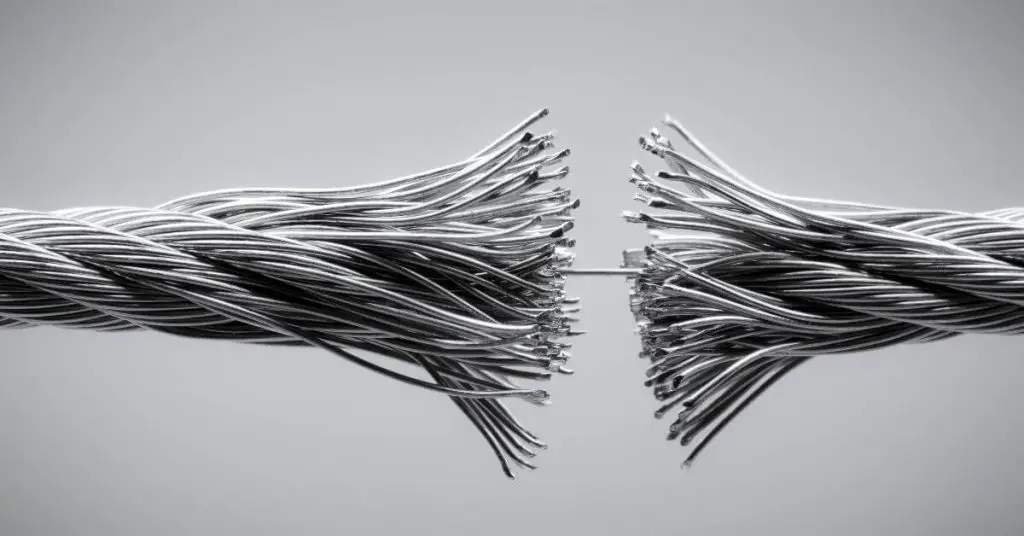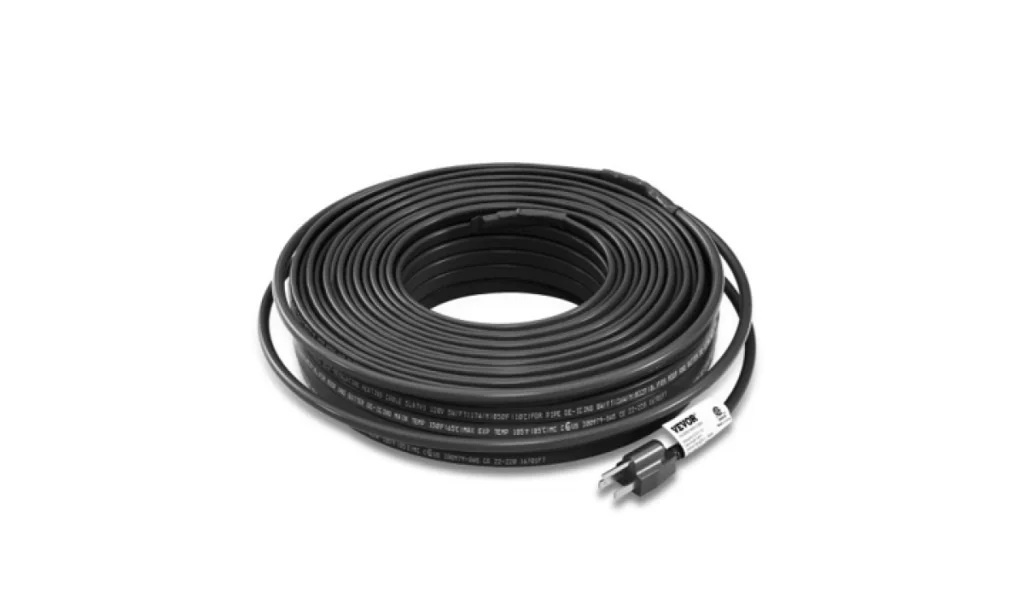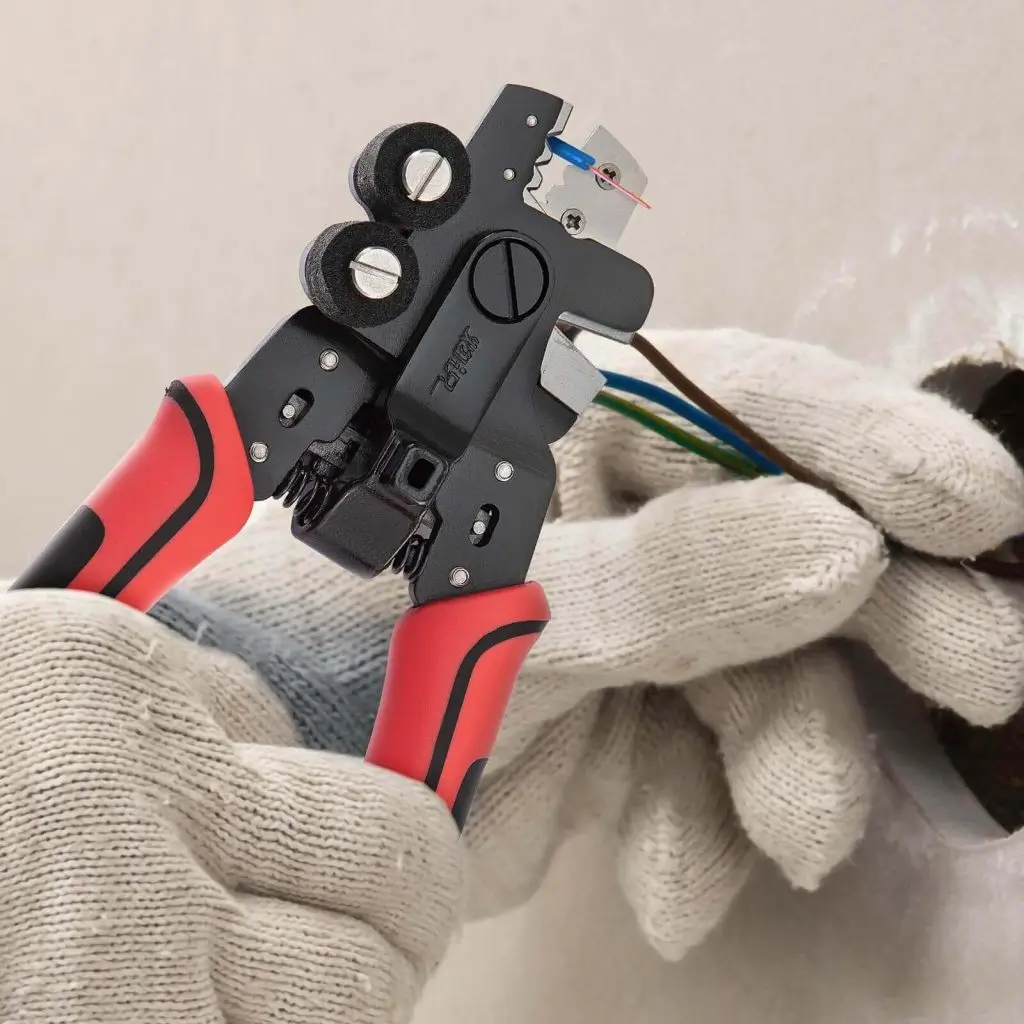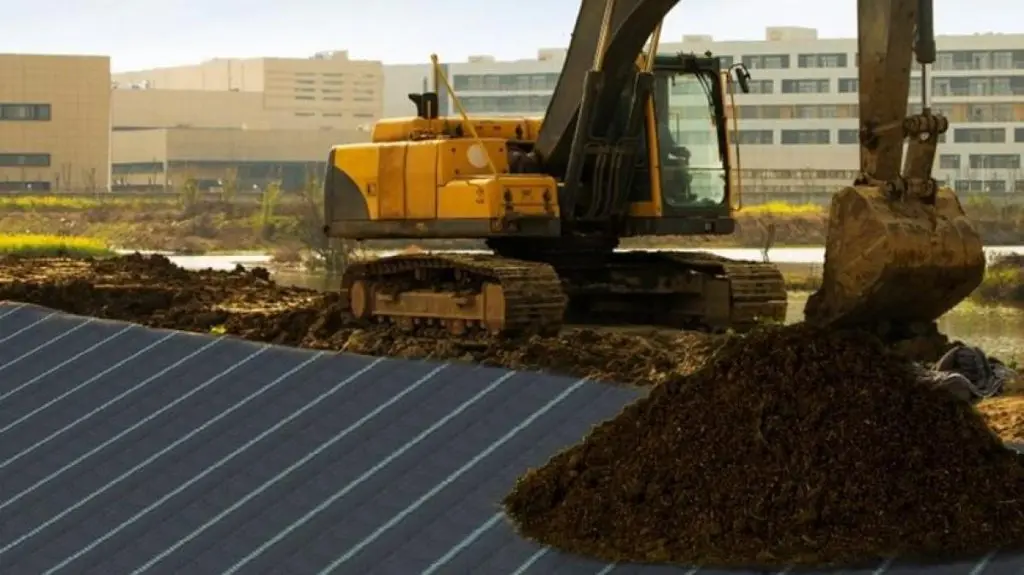Stainless steel cable is a very popular and commonly used material in a wide variety of industries. Whether we are talking about home and garden projects, industrial applications, manufacturing, marine use, or construction, stainless steel cable is very versatile.
With that being said, when you buy stainless steel cable, it’s usually not going to be of the exact lengths that you need. This means that you need to cut a stainless steel cable down to size.
However, cutting stainless steel cable requires the right kind of tools and knowledge. You need to be able to make an accurate cut without causing damage to the cable.
If you’re looking for high-quality stainless steel cables as well as the tools required to cut them, VEVOR is a great brand worth considering. Whatever the case may be, this in-depth guide will provide you with all of the information you need on how to cut stainless steel cable.
Table of contents
What is Stainless Steel Cable?
Stainless steel cables may also be called wire rope. This is the type of cable that is composed of many different strands of stainless steel wire. This stainless steel wire is twisted together to form a single flexible, strong, and rust-resistant type of rope.
Stainless steel is the number one material used to make stainless steel cables. The reason for this is because it contains a lot of chromium.
Chromium is a type of metal that is very resistant to tarnishing and rust. For this reason, stainless steel cables are great for use in environments where they are often exposed to chemicals, moisture, and extreme temperatures.
Stainless steel cables come in a variety of grades, with T316 and T304 being the two most common and popular. If you’re looking for something extremely strong, durable, and flexible, go for T316 stainless steel.
The reason why it is so suitable for many different applications, especially industrial and marine applications, is because T316 stainless steel has great corrosion resistance. Keep in mind that cables also come in many different constructions, with 7X19, 7X7, and 1X19 being three of the most common.
What is a Stainless Steel Cable Used For?
Something that you are probably wondering now is what exactly stainless steel cable is used for. Well, there are actually many different purposes that this type of cable can serve.
For instance, stainless steel cables are often used in both architecture and construction purposes. They can provide structural support, such as for high rise buildings and suspension bridges, while also offering a sleek and streamlined appearance. They are both aesthetically appealing and strong.
Another very common application of stainless steel cables is in the marine industry. Because stainless steel cables are very resistant to rusting and corrosion caused by saltwater, they are ideal for anchoring, securing boats, and rigging. They can last for a very long time while remaining secure and safe in marine settings.
This type of cable is also often used in both manufacturing and industrial settings. This is especially the case when it comes to machinery, particularly for rigging and lifting applications.
It doesn’t end there, because stainless steel cables can also be used for home applications, such as for making fencing, trellises, and railings. Just because stainless steel cables are very strong and flexible doesn’t mean that they can’t also look good. They provide you with a modern and clean way to support various plants and structures around your home.

How to Cut a Steel Cable: Step-by-Step
Let’s now go through an in-depth step-by-step process on exactly how to cut steel cable. Remember that you need to follow all of the steps below very closely in order to ensure maximum safety while also producing the best results.
Step 1: Get The Right Tools
The first step here is to gather all of the tools that you’ll need to cut stainless steel cables.
- First and foremost, getting a pair of high-quality cable cutters is called for. Something with sharp blades and a strong construction is needed. Remember that VEVOR offers such cable cutters at reasonable prices.
- You’ll then need some tape or marker so you can keep track of exactly where you want to cut the cable. It’s all about being precise and accurate.
- The next thing you’ll need for this project is a measuring tape or ruler. Once again, making accurate measurements is crucial if you want to make sure that the cable is ideal for your intended application.
- You’ll need some personal protective equipment (PPE), such as safety gloves and safety goggles. You don’t want to cause injury to yourself unnecessarily when you can easily protect yourself with the right equipment.
- The other thing you’ll need is a sturdy surface or workbench that you can cut the cable on. If you have a workbench with a vise or clamp, that’s even better, because you can secure the units down.
Step 2: Measure and Mark
The next step in the process of cutting stainless steel cable is to measure and mark it. This is crucial if you plan on achieving the best possible results. Use your measurement tape or ruler to measure exactly how much cable you need.
Make sure to be precise, because you don’t want any errors. Once your measurements have been made, use a piece of tape or a marker to clearly indicate where the cutting point is. This will help guide your cut.
Step 3: Make Sure the Cable is Secure
One of the things that you absolutely never want to do when cutting stainless steel cable is to do so unsecured. Therefore, you want to secure it down to a surface. This not only ensures safety but also helps keep everything very accurate.
Therefore, take your stainless steel cable and position it on the workbench in a way that the cutting point is easy to access. Once you’ve chosen the position, use a vise or clamp to secure the cable down.
This will help prevent the cable from slipping and moving around during the cutting process. If you plan on achieving an accurate cut, then this is essential. If you don’t have any kind of vise or clamp, you’ll need somebody else to hold it down for you.
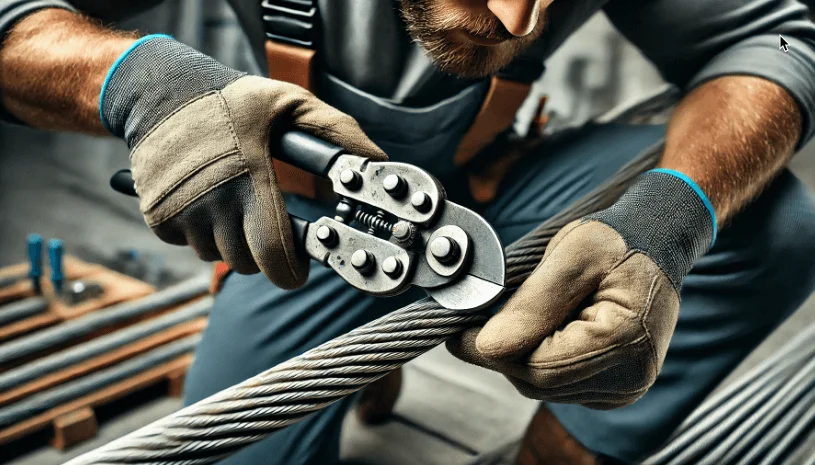
Step 4: Cut the Stainless Steel Cable
What you need to do now is to make sure that your cable cutters are properly positioned. First, you need to align the blades by placing them right over the cutting point on the stainless steel cable. You want perfect alignment here. Remember, you need the cable to be very stable and secure to prevent it from moving.
At this point, you can cut the stainless steel cable. Hold your cable cutters in hand very securely and firmly, and then apply constant pressure. You don’t need to apply too much pressure at once, and it doesn’t need to be explosive in nature.
You want to apply pressure in a controlled and steady manner. This will ensure the best possible results. Make sure that you are using very high quality cable cutters, as this will help make the cutting process much easier. Remember that VEVOR has tools perfect for this. They offer a wide variety of cable cutters that come in at reasonable prices while also having great durability, strength, and overall functionality.
Step 5: Inspect and Clean Up
Once you have cut the cable, you need to inspect the ends to make sure that they are even and clean. Take a close look at both cut ends of the cable to make sure that they are clean and straight. If they are uneven or jagged, it can cause problems.
If there are any sharp, rough, uneven, or jagged edges, use a special metal file or metal sandpaper to create a smooth end. This will help the stainless steel cable look better while also preventing any injuries.
Finally, it’s time to clean up. Make sure to clean up any debris and pieces of small wire from the work area. You then want to dispose of any leftover pieces and offcuts. Remember, these pieces can be very dangerous if you leave them lying around.
Once you’ve cleaned up any debris, you then want to clean your cable cutters. Just remove any debris or residue to help them stay sharp. Once that is done, make sure to place your tools in a safe and dry place to prevent them from being damaged or from resting.
Recommended For Your Project
Safety Tips for Cutting Stainless Steel Cable
There are some very important safety tips that you need to follow when working with stainless steel cable, especially when cutting it. Remember that safety is of the highest priority.
- You should always wear proper protective gear when cutting stainless steel cable. You need to protect your hands by wearing suitable construction gloves. Stainless steel cables can have sharp edges, with wire strands being able to cause damage and injury. You also need to wear safety glasses to protect your eyes from any debris that may become airborne.
- Don’t just use any tools. When cutting stainless steel cables, you need to use the right kind of cable cutters. There are cable cutters designed specifically for cutting stainless steel cables. You don’t want to use the wrong kind of tools because this will result in uneven cuts and possible injuries.
- Never cut an unsecured cable. Always clamp a cable down or hold it in place securely before making a cut. This will allow you to achieve an accurate cut while remaining safe.
- Before you start making any types of cuts, make sure that the area you work in is free from obstacles and completely clean. A workspace that is clean and free of all extra objects helps reduce the risk of you suffering an injury.
FAQ
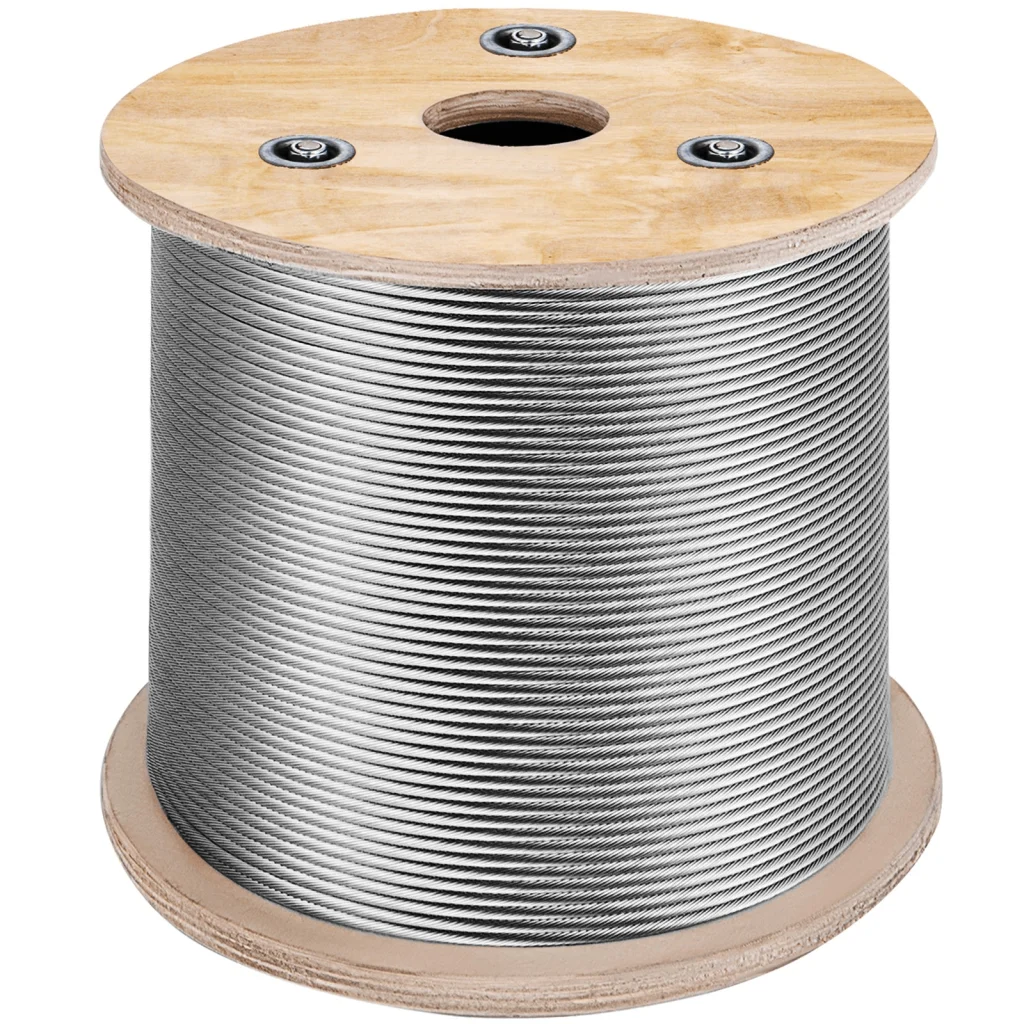
Can Regular Wire Cutters Cut Stainless Steel Cable?
No, you can’t use regular wire cutters to cut stainless steel cables. They are likely not sharp enough and will not provide you with a clean and accurate cut. It is best to use very high-quality cable cutters that are designed for cutting stainless steel, such as those available from VEVOR.
Do I Need to Maintain Cable Cutters?
Yes, you need to maintain your cable cutters. Make sure to remove any and all debris and moisture after each use, as this will help prevent the cable cutters from becoming dull and rusting. You should also lubricate the pivot point with an appropriate oil to make sure that it operates smoothly at all times. To prevent corrosion from occurring, store the cutters in a dry place.
What Type of Stainless Steel Cable to Use for Marine Applications?
If you are going to be using stainless steel cable for marine applications, using T316 stainless steel is your best bet. Due to its additional chromium content, it is ideal for corrosion resistance.
How Do I Stop Stainless Steel Cable from Fraying When I Cut It?
To stop stainless steel wire from fraying when you cut it, use tape to wrap the area. Using tape to wrap the area that you are going to cut will hold the strands in place, therefore allowing for a more accurate cut.
Cutting Stainless Steel Cable: Final Thoughts
The bottom line is that cutting stainless steel cables is not overly difficult. It’s actually a rather simple process, as long as you have the right knowledge and tools.
If you are looking for stainless steel cable to cut, as well as the proper kind of cable cutters for stainless steel cables, then you absolutely need to check out VEVOR. Our brand offers very high-quality products at more than reasonable prices.
Remember, if working on a construction project, marine project, or for any kind of home purposes, a stainless steel cable might be exactly what you need.

